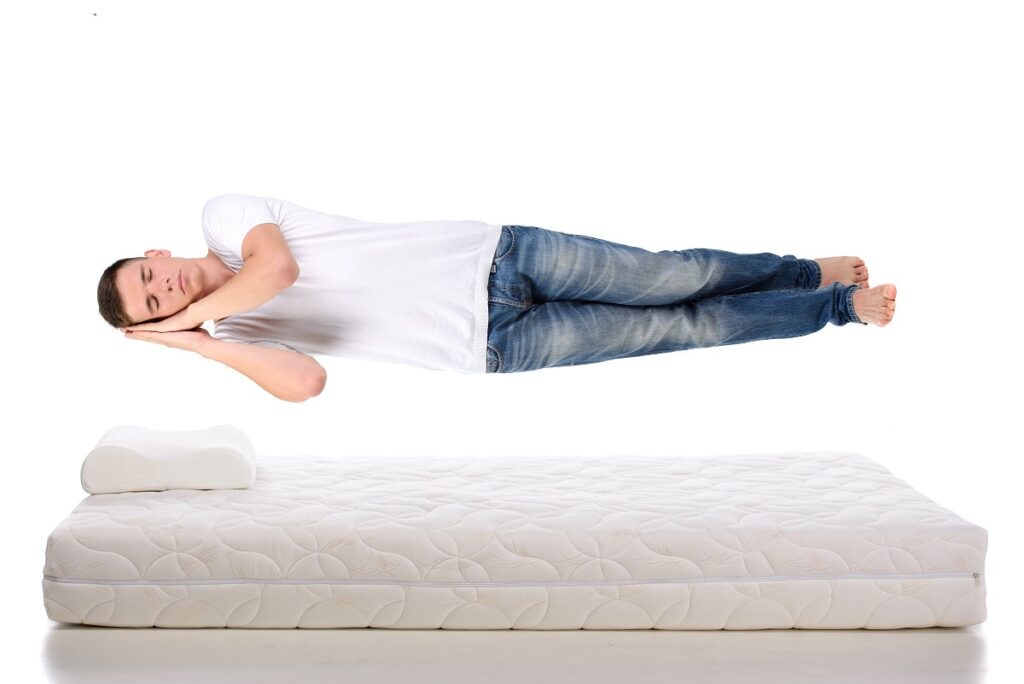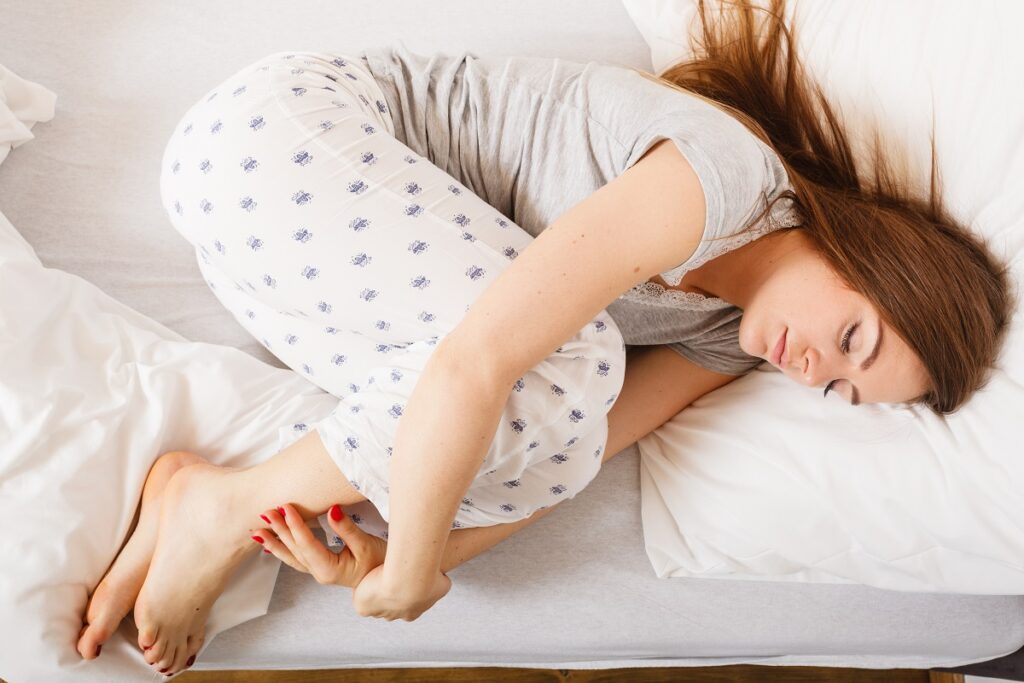You might have great posture at work. You might have great posture at play. You might have great posture all day, but what happens to your posture after the sun goes down?
We all spend about a third of our time sleeping, and for most of us nighttime is also the longest time period we go without getting up, moving or stretching.
While sleeping posture is not the only factor influencing sleep quality, it can make the difference between waking comfortable and refreshed, or tossing and turning all night with back and neck pain and facing a day of headaches, heartburn or fatigue.
No one sleeping position is comfortable for everyone, and each position has their own unique pros and cons. We’ll cover each common sleeping position here, and give you a few tips so you can get the most comfortable and restful night sleep possible.
Sleeping Position 1: Back

Pros:
- Spine and neck are able to rest in alignment
- Reduces risk of unnecessary pressure on your back
- Less back and neck pain than other sleeping positions
Cons:
- Snoring! Your partner may need to invest in some earplugs.
- Can worsen symptoms of sleep apnea
Tips:
- Put a pillow underneath your knees. This will keep your spine aligned and take any extra pressure off your back.
- Place a small pillow under the curve of your lower back for this added support to spread out your weight more evenly.
- Consider upgrading your mattress to a medium-firm, quality mattress so that you’re not sleeping on a surface that is too soft or too hard for your back.
Sleeping Position 2: Side

Side sleeping: even better in zero-gravity! Pros:
- Allows spine to stretch out, reducing chance of waking up sore
- Most comfortable position for the majority of people
- Less snoring than when sleeping on back
Cons:
- Sleeping on right side may cause symptoms of GERD or heartburn to flare up.If you suffer from either of these conditions stick to the left side.
Tips:
- Put a knee pillow between your legs to keep your legs, hips and spine in alignment
- Make sure your head pillow supports your head adequately, but doesn’t goes your neck and head to bend upward, which will lead to neck pain.
Sleep Position 3: Fetal

Pros:
- Easiest position to sleep in for many people
- Can be quite comfortable
Cons:
- Can leave you feeling sore, especially if you already suffer from chronic pain
- Puts pressure on the back and spine, which can cause discomfort
Tips:
- As with standard side sleeping, a knee pillow can help keep your legs, hips and pelvis aligned.
- Try gradually transitioning to a more stretched-out pose over time in order to reduce pressure on your back
Sleep Position 4: Stomach

Pros:
- Greatly reduces snoring
- Can be good for people suffering from degenerative disc disease
Cons:
- Strains and twists neck
- Puts strain on muscles and joints
- Can cause tingling, numbness and aches
- Can be dangerous for pregnant women
Tips:
- Try napping in other sleeping positions to retrain your body to accept other sleeping positions
- Prop your forehead up with a pillow, allowing you to keep your airways open without twisting your neck
- Use hip and neck pillows to promote better spine alignment
Posture is one important element in determining sleep quality, but even ideal sleep posture cannot overcome the fatigue and many related symptoms of sleep disorders like Obstructive Sleep Apnea.
At Apple Healthcare, we offer take-home sleep studies than can be used to diagnose obstructive sleep apnea in the comfort of your own bed without the cost and hassle of an in-lab sleep study. We also help patients with OSA improve the quality of their sleep by providing APAP machines and masks.
Want to learn more about the take-home sleep studies we offer or make an appointment? Give us a call at 865-524-1234!









